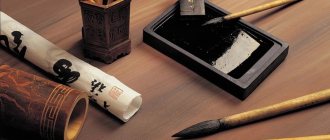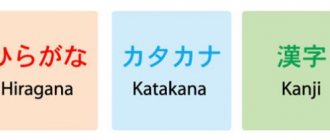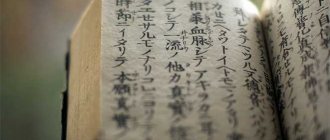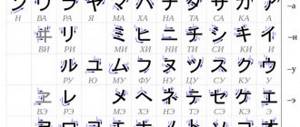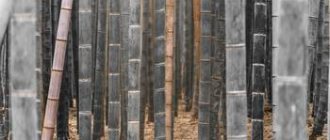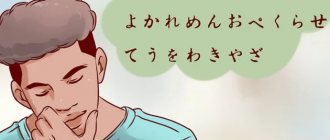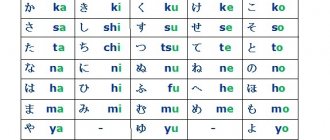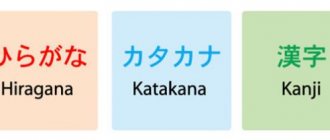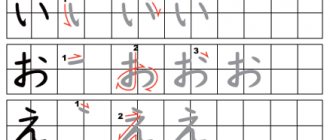The Japanese language is unique. Just like Japan itself and its people. We admire the sacred symbol of Japan - Mount Fuji or Fujisan. We love Japanese cuisine - ramen, sushi, yakitori and many other dishes. Every person touches Japanese culture and begins to become interested in it. Some people get so carried away that they have a great desire to learn Japanese. The Japanese language is melodic, rhythmic and beautiful. It's worth listening to a few songs in Japanese and getting a feel for how good the songs sound in Japanese. The Japanese language is unique and multifaceted. This article will talk about the best guides to help you learn Japanese. Don't forget to bookmark the article so you can return to it periodically. We also recommend reading where to start learning Japanese.
Minna no nihongo
This is a fundamental textbook that should be on every Japanese student's shelf. This is the most understandable and accessible textbook. To successfully study the Minna no Nihongo textbook, you need to know katakana and hiragana.
Benefits of using the tutorial:
- The material in Minna no nihongo is presented in an accessible and interesting manner;
- A large number of illustrations;
- Only modern vocabulary is used (there are no tepu reko:da);
- After studying the material, you will be able to use the knowledge when communicating with the Japanese.
Genki
When meeting other people, the Japanese ask: “How are you?”: “O-genki desu ka?”, literally: “How are you?” The word Genki translates to “healthy, full of life, happy, vigorous.” And this word is used in the title of Genki tutorials. The textbook material was carefully created based on the needs of students. This project took more than four years to complete. This is the textbook that will allow students to easily learn Japanese. The textbook is equipped with useful and colorful illustrations.
Our top choice
When preparing for the exam, the most important thing you can do is review your past papers, which is why our number one recommended JLPT study guide includes exam questions so you can practice your JLPT and know what to expect on test day.
These are our top picks for the best JLPT textbooks!
JLPT Official set of 5 books
N1 N2 N3 N4 N5 Japanese Proficiency Test Mock Exam Questions Workbook, Original Notes
Features: Practice questions that will help you prepare Level N5 through N1
This is the perfect collection for hard-working, motivated students who know they want to take their Japanese from complete beginner to advanced level.
Buying them in bulk will save you money in the long run instead of buying every textbook as it becomes available, but we only recommend for students who know they are committed and want to learn the entire Japanese language.
The best way to prepare for an exam is to take the past papers of that exam, so you should consider purchasing this collection of exam question books.
Average price: $75
Dekiru Nihongo
The peculiarity of this Japanese textbook is that the student can immediately apply the acquired knowledge in real life, in communicating with foreigners. The textbook for beginners to learn Japanese consists of 15 lessons. Each lesson has the following sections: speaking, listening, studying a specific topic, consolidating material and memorizing vocabulary. The tutorial will cover topics such as shopping, daily routine, my favorite pastimes, culture and customs, and much more.
Try
Try is an excellent language learning guide with easy-to-understand grammar explanations. Each section presents a dialogue with the grammatical structure being studied. This is followed by an explanation of grammar and exercises to consolidate the material. This textbook is used in the best language schools in Japan.
Advantages of the textbook:
- Simple explanation of grammatical structures;
- Availability of keys to tasks;
- Simultaneous training of two languages: English and Japanese;
- The format of the audio assignments corresponds to the Noryoku Shiken exam;
- Having all five levels (N5, N4, N3, N2, N1) to prepare for Noryoku Shiken.
Japanese “Live”: Speaking Skills Learned through Listening
A Japanese textbook aimed at developing speaking skills. The peculiarity of this textbook is that all tasks are audio. You listen to people's conversations and choose the correct answer. It is also convenient that the tasks are given in parallel with the English language. If you are an auditory learner (that is, you perceive information well by ear and have a good auditory memory), then you simply must purchase this textbook.
A huge advantage in mastering Japanese is knowing English. You will need English to learn Japanese using books written in English. Most textbooks for learning Japanese use English.
Japanese textbooks. What are they?
First of all, textbooks can be divided into two categories:
- Russian textbooks,
- Japanese textbooks.
Japanese textbooks more because they have more real, lively dialogues and texts, words that are closer to reality. In any case, it is very important that textbooks (no matter whether they are Japanese or Russian) include Japanese authors.
Russian textbooks are often more emotionally comfortable. For example, in the fact that everything is explained in your native language. And if you are bad with other languages, Russian textbooks will be more convenient for you. Another advantage of Russian textbooks is a clear explanation of grammar. Because in a foreign language, the explanation of grammar may not be clear.
So, in fact, I have a lot of textbooks. I will probably prepare a separate review for each textbook. Now I will try to briefly describe the pros and cons of each textbook, and read in more detail in the following issues.
Japanese for today
The year of publication of the book is 1990. The book may seem a little old. It contains basic information about grammar. You will read texts on various topics. All texts are provided with parallel translation. Japanese for Today contains 30 lessons. First comes the text written in the Japanese Hiragana syllabary and Japanese Kanji characters. The Japanese text is followed by the Romaji text and then the English translation of the text. After reading the texts, basic information about grammar, useful phrases and expressions are given. At the end there are exercises to consolidate all the lesson material. Despite the fact that the publication is quite old, the manual will help you understand the basic grammatical structures of the Japanese language and master colloquial words and expressions.
Kanji Study
Android (), iOS (not updated by the developer, )
One of the best applications for those who learn Japanese. It is aimed primarily at writing, at studying Japanese characters - kanji.
One of the modes for learning kanji is flashcards.
To achieve this, Kanji Study provides a number of functions:
- Just cards with kanji “on one side”, and its readings, translations and other information “on the other” - an ideal mode for the first acquaintance with signs
- Several modes of quiz tests - you can guess different readings, you can translate, you can, on the contrary, choose the correct sign in accordance with the meaning or translation, and there is also a very cool mode where you need to remember all the kanji readings
- A character writing trainer is, in my opinion, much more effective than the tedium of writing characters ten times on paper, and allows you to brush up on how to write kanji anywhere (I'll say this again and again, but your time in the toilet, Finally, it won’t just be flushed down the toilet!)
Search for kanji taking into account the number of strokes (!) and the radicals included in it
You can also use Kanji Study as a Japanese dictionary; it is very convenient and fast. Write at least a reading, at least a translation, at least a part of the reading, at least the radicals included in the kanji - the search happens right there on the fly.
There is also an advanced paid add-on that is aimed at those who want to delve deeper into the etymology and history of kanji. Most people can safely ignore this addition, but for interested kanji enthusiasts it could be very interesting.
In Kanji Study you can start studying with kana
It is important that the application is also suitable for beginners who decide to learn Japanese on their own, because here you can start with hiragana and katakana (Japanese syllabaries that are taught very first).
The free version of this application for learning Japanese provides a ton of functionality and will definitely fully satisfy the needs of a beginner starting to learn Japanese from scratch, because basic kanji are available for learning for free. And when the time comes to move on to the blocked sections, I think no one will have any doubt that the application is worth its money - this is a purchase that will serve you for years and will pay for itself many times over. The application is a one-time purchase, no subscriptions! It is made by one person , your purchase will be the best gratitude for his truly titanic work.
Advantages
- Many study modes that can be very flexibly customized
- The ability to learn both individual kanji and words, as well as remember it all in the context of entire sentences
- A very cool search that can replace a separate dictionary application
- Distribution model - you can start for free, and if the desire continues, you will only need to pay once, and the price is the same as an hour of a tutor
Flaws
- The translation into Russian is incomplete, because it is done by volunteers (if you know English, it is better to switch to it right away)
- The iOS version is abandoned and is much inferior to the Android version in terms of functionality. This happens because the developer does not have time to work on two versions at the same time (however, in December the author announced that he had begun to deal with the iOS version)
Ashizawa Kazuko. Mangajin. Basic Japanese through Comics
These books contain both simple words and phrases and words that are not usually considered simple at all. Illustrations from Japanese manga are presented with English translations and notes to help the novice understand the material. This book is not intended to be used as a textbook, but rather as a supplement to a more structured study of the Japanese language. There are 48 lessons in total in the book.
JLPT N4
Nihongo So-matome: Essential Practice for Japanese Language Proficiency Test (JLPT), N4 Grammar, Reading Comprehension, Listening Comprehension
Features: Translations from English to Korean! Practice exercises to check your progress Grammar Reading Comprehension Listening
Work your way to N4 success with study material on one side and exercises to check your progress on the opposite page. These N4 textbooks cover the core sections of reading, grammar and listening to help you prepare for JLPT N4 success. Study this material in approximately 6 weeks to prepare for the N4 JLPT exam. Of course, you can make this time longer or a little more difficult depending on the date of your exam.
Average price: $30.00
Bernabe Marc. Japanese in Mangaland
This book presents very simple words and phrases. In addition, you will learn words that are not usually considered “basic.” With the help of Japanese in Mangaland books, you can easily learn the basics of the Japanese language. The book shows stills from Japanese manga, which makes the material easier to understand.
This book is not a textbook, but rather an additional entertaining guide. All chapters of the book can be read in any order. The presented material shows all the nuances of speech. With Japanese in Mangala you will gain a better understanding of the language and the people who speak it.
Voordov A.M. Self-learning texts
This is the second textbook in the “Japanese for the Soul” series. Self-learning texts are different from the previous book. The book presents two stories: “Baska” and “Bug”. The great advantage of this book is that each person can choose their own method of learning Japanese using this book. You can read the Japanese version of the text and analyze the grammatical comments along the way. Or go to the end of the manual and study the hieroglyphs presented (each hieroglyph is given a kun and on reading, and individual words are also written out). Everyone decides for themselves which learning method to choose.
Nechaeva L.T. Japanese for beginners
Japanese for Beginners is one of the best Russian-language textbooks for learning Japanese. The simplicity and accessibility of the material will help you learn Japanese quickly and effectively.
Advantages:
- Clear grammar explanation for beginners;
- A large number of examples in both Russian and Japanese.
Flaws:
- Lack of a dictionary at the end of the textbook;
- There are no answers to most tasks.
Best Japanese Textbooks for the JLPT Exam
If you are taking the JLPT exam, then regardless of your level, you will need a textbook that was written specifically for the exam, and not just for beginners or advanced students.
The JLPT has five levels: N1, N2, N3, N4 and N5, with N5 being the easiest exam and N1 being the most difficult. No matter what level you are at, you will definitely need a textbook to help you prepare for the JLPT.
Here are the Japanese textbooks that we think will be most helpful to you when taking the JLPT.
- Nihongo So-matome Workbook
- Nihongo So-matome: Basic Practice for Japanese Language Proficiency Test (JLPT) Level N4
- JLPT Level N3 Nihongo So-matome for Learning Japanese 5 Book Set
- JLPT Level N2 Nihongo So-matome for Learning Japanese 5 Book Set
- JLPT Level N1 Nihongo So-matome for Learning Japanese 5 Book Set
- Basic Japanese Kanji Volume 1
- Japanese Kanji for Beginners
You have now seen our list of recommended JLPT textbooks. Keep reading to learn more about them and choose which one is right for you.
Golovnin I.V. Japanese language textbook (in 4 books)
A fundamental textbook that has earned its reputation as a seminal work. The textbook consists of four parts (four books): “Course for Beginners” (1st, 2nd books), and “Course for Advanced Students (3rd, 4th books).
Advantages of the textbook I.V. Golovnina:
- Systematic presentation of grammatical information;
- Detailed explanation of grammar;
- Reading skills training;
- Assignments and exercises to consolidate the material covered.
Feldman-Konrad N.I., Tsyn M.S. Japanese language tutorial
This is the second edition of the “Textbook of Scientific and Technical Translation”, published in 1979 (the number of pages of the textbook was 639 pages). A new edition was published in 2007 in a more condensed version of 445 pages. In the 2007 edition, the consolidated Japanese-Russian dictionary and control translations into Russian were removed. In general, we can say that this fundamental work is intended for those people who want to master the translation of scientific and technical literature from Japanese into Russian. The textbook begins with a presentation of the basics of the Japanese language. The basics of hieroglyphics are explained. Then the texts are presented in Japanese with lexical and grammatical commentary. It is likely that beginners in learning Japanese will find this textbook difficult. But it is worth thanking the authors for their work, for the accessible explanation of grammatical rules and for the detailed lexical and grammatical comments that follow each text in Japanese.
What programs and textbooks can you use to learn Japanese?
Greetings, friends! Last time I promised that I would talk about textbooks and programs that will help you learn Japanese on your own. You must keep in mind that self-discipline is necessary to learn the language on your own, because no one controls you or checks how you did your homework, so if you doubt your abilities, it is better to immediately contact a specialist, look at the Japanese language school page.
I think that no one even doubts that when you are led by the hand, learning everything, even the Japanese language, is much easier and simpler, plus in the process of such learning, like-minded people appear with whom you can communicate and discuss issues. Sensei will answer all your questions and help you on the difficult path of mastering the Japanese language.
But at the same time, a much larger part of those who are interested in Japan prefer the path of independent language learning; some on this path very quickly leave the distance; others, by diligently studying, achieve their goal.
There are a lot of textbooks for learning Japanese, most of them written by Russian teachers. I will simply list these textbooks, I will not give a description, since I myself studied and am studying using the Minna No Nihongo textbook. If you do not know Japanese and you do not have a mentor who could explain complex issues, then preference should probably be given to textbooks by Russian authors.
- Nechaeva L.T. “Japanese for Beginners” – 2 volumes
- Golovnin I.V. "Japanese language textbook. Course for Beginners" (4 volumes in total, 2 for beginners and 2 more for continuing education)
- Strugova E.V., Sheftelevich N.S. “Reading, writing, speaking Japanese” - 2 volumes
The listed textbooks are considered the most popular (among the textbooks of Russian authors). For self-study, they are more comfortable and accessible, since all the grammar is explained in Russian. But what is a plus is also considered a minus, since Russian authors adapt the Japanese language to our concepts of language and use terms that are not in the Japanese language. Also, some textbooks are outdated, in particular Golovnin I.V., published in 1978. There is a later edition of this textbook from 2005 (2011), but the essence has not changed by and large. If you do not take into account the texts of the textbook, then grammar can be studied according to Golovnin.
Textbook by Nechaeva L.T. used for studying in universities, it covers grammar very well and has a lot of practical exercises, which is very important for consolidating the material. Using the textbook “Japanese for Beginners,” you can begin to learn the Japanese language with zero knowledge; the textbook begins with a detailed study of kana and gradually moves on to more complex elements. All grammar and explanations are given in Russian.
Textbook E.V. Strugova, N.S. Sheftelevich is also recommended by many for independent study. The textbook contains the Japanese syllabic alphabet - Hiragana and Katakana and copybooks for practical exercises, the order of writing hieroglyphs and a lot of practical material. The textbook is structured and logical.
Among the textbooks by Japanese authors, the most popular textbook is Minna No Nihongo; I’ll tell you more about the textbook later.
If the presence of kana with copybooks is considered a plus in Russian textbooks, then for me this was not a problem. Yes, in Minna No Nihongo the material from the first page is presented as if you already know the language (the very basics), but this should not scare you. Although, after looking at the textbook, even with a Russian translation, I simply closed it, deciding that this was a book for aliens and went to get used to Japanese speech, which I wrote about here. But from the second approach, the textbook and the material presented in it no longer seemed so scary. The main thing is systematic and methodical study of the Japanese language. I can say from the bottom of my heart that learning Japanese is really very interesting.
My learning of Japanese began with:
- Studying hiragana, which I took from Wikimedia. The file is quite visual, understandable and accessible, it shows the sequence of features, the pronunciation is indicated, you can write syllables on plain paper, you don’t need to have copybooks for this. But for those interested, a little later I will indicate a resource from which these recipes can be downloaded. The Hiragana alphabet (tables) can also be viewed and, if desired, downloaded here. This is educational material from NHK WORLD website.
- Then I began to study grammar using the textbook Minna No Nihongo (in the Russian version), without fail studying all the words that were given in the lessons, skipping only those written in hieroglyphs.
- At a certain stage, I realized that ignorance of katakana interfered with further study, so I had to master it too. Ideally, it is better to learn katakana immediately after hiragana. Katakana (table) with the order of writing strokes can be downloaded here.
- Online Japanese language lessons on the international website NHK WORLD turned out to be very useful and effective for me. Lessons last 10 minutes and are accompanied by audio texts voiced by native speakers with explanations from Russian speakers. The dialogues offered for study are very close to everyday communication. By learning dialogue, you will be able to speak and understand Japanese at the most basic level. In addition to the audio part, there is a lot of text material, grammar, words to study, quizzes, dictionaries, alphabet, both in audio and in text, which can be downloaded for practical work. Additionally, all materials offered on the site can be downloaded to your computer for independent study.
- Also, my constant companion is an audio dictionary, which probably contains 200-300 words, I don’t know where it came from, I found it on VKontakte. And every time I come home after work, between tasks I put on headphones and repeat the words. You can also listen to Japanese language lessons from NHK WORLD. I like this way of learning Japanese because it allows me to combine some mechanical work (cooking dinner) with learning.
- I also purchased an audio dictionary of Japanese words from Daria Moinich. The words are pronounced by a native Japanese speaker with repetition syllable by syllable, very convenient for those who have just started learning the language. Additionally, Daria sends a paper (electronic) format of the words being studied, which is also very important for learning; the words are written in hiragana and kanji. The dictionary is designed for beginners and contains a small number of words.
There are still many really useful and high-quality resources on the Internet that will help you learn Japanese on your own, so come visit often, we will get to know them together as the material becomes more complex.
Good luck and perseverance, friends, both in self-study and with a teacher, be it online courses, offline courses or individual training. All methods are good, because the main thing in this is YOU, your desire to learn the language.
Dyakonov O.V. Japanese is not scary
If you are not yet familiar with the author of a series of textbooks on the grammar of foreign languages, we recommend that you familiarize yourself with it. The author manages to present the material in an interesting and entertaining way with a touch of humor. And humor is always necessary for successful memorization and consolidation of knowledge. In addition, the author talks about some programs that can be used to learn Japanese.
Japanese characters (kanji) are an integral part of learning the Japanese language. This is the most difficult part in mastering Japanese. To speak Japanese well, you need to know about 2 thousand characters. It is also necessary to remember that each kanji, as a rule, has two readings: onnoe and kunnoe. This creates additional difficulty in learning. Some people are convinced that hieroglyphs should only be learned mechanically, by cramming. Learn and prescribe kanji many times. However, there are more interesting ways to memorize hieroglyphs. Let's consider which books to choose to master Japanese writing.
Get the most out of your Japanese JLPT textbook
Once you've chosen the perfect Japanese textbook to help you prepare for the JLPT exam, you need to know how to use it to get the best results. Because anyone can buy a textbook, but it takes more than that to learn and succeed in JLPT.
Learn Kanji
Before you start studying Japanese textbooks, make sure you know kanji and hiragana. This way, you can get started right away when you start learning.
Use your JLPT textbook every day
If you study a little every day, your Japanese will improve much faster than if you only study once a week. If you use a Japanese textbook every day, you will see quick improvements that you won't see if you set aside two hours on Sunday to fully study Japanese.
Do the exercises in your JLPT textbook
Make sure you do the exercises and not just read the information. Only by doing the exercises will you be fully trained for the JLPT and will be ready when it comes to the exam. The Japanese language textbook is not only meant to give you information, it also requires you to complete the exercises so that you can monitor your progress.
Mark the exercises in your JLPT textbook now
Another helpful tip is to mark your answers right away. If you are doing an exercise in your JLPT textbook, don't wait until the next day to mark it, otherwise you will forget why you decided to ask certain answers. Instead, mark it right away, while the information is still fresh in your mind, so you can understand why you asked a certain question correctly or even incorrectly!
Research for JLPT in other ways
To get the most out of your Japanese textbooks you need to make sure that you study in other ways that can complement your learning. You don't want to just focus on
Voordov A.M. Japanese for the soul
The book by Alexander Morisovich Voordov is not a textbook, but rather an “entry” into the Japanese language. The author can be compared to a guide, a guide, a creator who introduces you to a unique writing system. The book contains 20 essays. Each story is based on a specific hieroglyph, which is explained in detail in each story. Each essay is a plot with a beginning and an outcome. When reading the book you will experience an indescribable feeling of pleasure. In addition, the author of the book has an amazing website - www.japlang.ru, where you will find a lot of interesting and useful information on learning the Japanese language.
Advantages of the book:
- You will lose your fear of Japanese writing;
- Quick memorization of many kanji;
- Each kanji is explained in detail;
- The order of writing hieroglyphs is explained;
- The presence of humor;
- Interesting stories about the culture of Japan and China.
Best Japanese Textbooks for JLPT Summary
These are the best textbooks to prepare for the JLPT exam. Let us know which JLPT tutorials you found useful.
And also tell us what level you are studying at or have already passed. We always want to hear about your progress, especially if we were able to help you. And then you can recommend your favorite JLPT textbook to our other readers who may be thinking about taking the exam.
Now, if you want to unwind from all this JLPT preparation, why not take a look at some of the best Japanese films available to help you learn Japanese. This way, you can enjoy Japanese culture while you study, and everyone knows that whether it's horror or anime, the Japanese know how to create quality content.
Remember that while you should study and use your JLPT textbook every day, you also need to make time for yourself. Make sure you take a break from studying to relax, otherwise you will find yourself becoming even more stressed, sometimes to the point where you cannot be productive.
Len Walsh. Japanese language tutorial
Every person can be scared by Japanese characters. Especially if you see them for the first time. Lots of incomprehensible features. And as soon as the Japanese understand them... These are exactly the thoughts that may appear in a person just starting to take Japanese classes. However, Len Walsh shows and explains the origins of the main characters of the Japanese language with simplicity. Read Len Walsh's Japanese Self-Teacher to help you understand kanji better. Japanese writing will not seem so mysterious and mysterious.
JLPT FAQ
Before you go, make sure you take a quick look at JLPT's FAQs:
What happens if you fail the JLPT?
If you fail the JLPT, don't worry, you can retake the exam as many times as you like.
How else can I prepare for the JLPT exam?
Besides purchasing a Japanese textbook to help you with the JLPT, there are other things you can do to help you prepare for the JLPT.
- Find a Japanese language partner
- Switch your devices to Japanese
- Watch Japanese TV and movies
- Try reading Japanese every day
- Use memrise or anki to help you learn Japanese characters and vocab
- Find a Japanese tutor to help you prepare
- Find a Japanese fiction book written for your level to practice your comprehension skills
- Do JLPT of past papers within the given time frame.
- Use forums to ask other students for advice on their study habits
- Talk to yourself in Japanese as you go about your daily activities
Is JLPT worth it?
Not only is it worth the JLPT in terms of accommodation, it will also help you learn more vocabulary and significantly improve your Japanese language skills.
Is JLPT N5 heavy?
Any exam can be difficult if you take it before you're ready or if you don't prepare properly, but since N5 is the easiest of the Japanese language exams, it shouldn't be too difficult compared to others unless you are preparing correctly.
Rowley M. Kanji Pict-O-Graphix: Over 1,000 Japanese Kanji and Kana Mnemonics
This book is published in English. How to learn kanji? The traditional approach is rote memorization. The Japanese write kanji several hundred times, and eventually they are learned. Michael Rowley suggests another method, the method of mnemonic associations. Each hieroglyph is accompanied by an illustration explaining the meaning of the hieroglyph. Thus, the picture becomes the key to memorizing the hieroglyph. Let's give an example from the textbook. Kanji meaning "fish": 魚 (pronounced "sakana" in Japanese):
To remember the meaning, the following image is attached to the hieroglyph:
An explanation is given for the picture: “I caught 4 fish.” After such an illustration and description, you will forever remember the meaning of the hieroglyph. There are a huge number of such examples in the book. This book will make it easier for you to memorize kanji. Michael Rowley does a wonderful job combining imagination and drawing technique. The book surpasses the old mechanical method by making learning kanji attractive and accessible.
